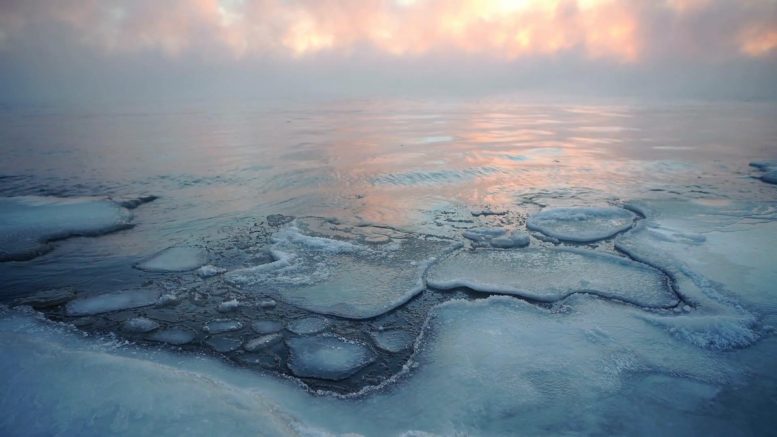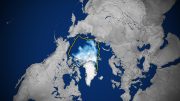
In 2023, Antarctic sea ice declined to historically low levels, prompting researchers to use CMIP6 climate models to assess the event’s rarity and its connection to climate change. The study found that without climate change, such a drastic reduction would be extremely rare, but current climate conditions made it more probable. The research suggests that a lasting decrease in sea ice could have profound implications for weather patterns and marine ecosystems, making ongoing studies essential for understanding and forecasting future changes.
Antarctic sea ice reached record lows in 2023, with studies indicating that climate change significantly increased the likelihood of this event. The potential long-term reduction in sea ice poses serious consequences for global weather and marine life.
In 2023, the Antarctic sea ice shrank to historically low levels, with winter ice coverage falling more than 2 million square kilometers below normal—roughly equivalent to ten times the size of the UK. This significant decrease was particularly striking given the steady increase in sea ice that had been observed up until 2015, making the abrupt drop even more unexpected.
Using a large climate dataset called CMIP6, British Antarctic Survey researchers investigated this unprecedented sea ice loss. They analyzed data from 18 different climate models to understand the probability of such a significant reduction in sea ice and its connection to climate change.
Lead author Rachel Diamond explained that while 2023’s extreme low sea ice was made more likely by climate change, it was still considered very rare according to the models.
She says: “This is the first time this large set of climate models has been used to find out how unlikely 2023’s low sea ice actually was. We only have forty-five years of satellite measurements of sea ice, which makes it extremely difficult to evaluate changes in sea ice extent. This is where climate models come into their own.
According to the models, the record-breaking minimum sea ice extent would be a one-in-a-2000-year event without climate change. This tells us that the event was very extreme – anything less than one-in-100 is considered exceptionally unlikely.”
Caroline Holmes, a co-author on the study, said: “Strong climate change – i.e. the temperature changes we’re already seeing, and those expected if emissions continue to rise rapidly — in the models makes it four times more likely that we see such a big decline in sea ice extent. This suggests that 2023’s extreme low was made more likely by climate change.”
Long-term Consequences and Future Projections
The researchers also used the models to look at how well sea ice is likely to recover. By looking at similar events in the models, the authors found that after such extreme sea ice loss, not all of the sea ice around Antarctica returns – even after twenty years. This adds model evidence to existing observational evidence that the last few years’ low sea ice could signal a lasting regime shift in the Southern Ocean.
Louise Sime, a co-author on the study, says: “The impacts of Antarctic sea ice staying low for over twenty years would be profound, including on local and global weather and on unique Southern Ocean ecosystems – including whales and penguins.”
Satellite records of Antarctic sea ice began in late 1978 and between then and 2015, Antarctic sea ice extent increased slightly and steadily. In 2017, Antarctic sea ice reached a record low, and has been followed by several years of relatively low sea ice extent.
There are many complex and interacting factors that influence Antarctic sea ice, making it hard to get a clear understanding of why 2023 was such a record-breaking year. Recent studies have highlighted the important role of ocean processes and heat stored below the surface, and warm sea surface temperatures during the first half of 2023 may also have contributed. Strong variations in north-to-south winds and storm systems also played a role.
Antarctic sea ice is a critical factor in our overall understanding of climate change. Sea ice formation around the Antarctic acts as an engine for ocean currents and influences weather patterns. It also protects the exposed edges of the ice shelves from waves, curbing Antarctica’s contribution to sea level rise. Sea ice is also vitally important for marine life – scientists have observed catastrophic breeding failures of emperor penguin colonies because of low sea ice in recent years.
Studies like this one are therefore critical to find out how likely rapid sea-ice losses are, and if sea ice is likely to stay low over the coming decades.
Reference: “CMIP6 Models Rarely Simulate Antarctic Winter Sea-Ice Anomalies as Large as Observed in 2023” by Rachel Diamond, Louise C. Sime, Caroline R. Holmes and David Schroeder, 20 May 2024, Geophysical Research Letters.
DOI: 10.1029/2024GL109265









Tuo Antarctiksen merijään vaihtelu seuraa synkronisesti menneitä aurinkoaktiivisuustasoja halotermisen ja termohaliinisen kierron ohjaamana joka vaikuttaa myös ilmaston lämpötilaan.
Kyse Antarctiksen ja yleensä koko maapallon lämpötilavaihteluissa ei ole ilmastonmuutoksesta vaan ilmastonvaihtelusta luonnollisten tekijöiden voimin eli kyse on merestä ilmakehään vapautuvan viiveellisen aurinkoenergian vaihtelusta joka aiheuttaa ajoittaisia lämpökausia ja ajoittaisia kylmiä kausia. Ihmisen osuus lämpenemisestä on todellisuudessa vähäistä.
“Study Explains UNPRECEDENTED Antarctic Ice Loss”
The title is misleading. Summer sea ice was lower in 1980 and 2017 than in 2023. [ https://nsidc.org/data/seaice_index/images/s_plot_hires.png ]. According to NOAA [ https://www.climate.gov/news-features/understanding-climate/understanding-climate-antarctic-sea-ice-extent ]:
“More so than the Arctic, Antarctic sea ice extents are extremely variable, both seasonally and from year to year. In the past decade there have been record and near-record high extents, as well as record and near-record lows. The overall long-term trend (since 1979) is nearly flat.
“In 2023, the Antarctic sea ice shrank to historically low levels, with winter ice coverage falling … below normal—roughly equivalent to ten times the size of the UK.”
That comparison is really a non sequitur. A more useful scientific comparison is either the percentage drop in total Winter sea ice or the number of standard deviations below the average.
“Using a large climate dataset called CMIP6, BAS researchers investigated this unprecedented sea ice loss. They analyzed data from 18 different climate models to understand the probability of such a significant reduction in sea ice and its connection to climate change.”
The Climate Model Intercomparison Project-6 is not just a dataset. It is first and foremost a collection of models, known to run even warmer than previous models: https://pcmdi.llnl.gov/CMIP6/
“Lead author Rachel Diamond explained that while 2023’s extreme low sea ice was made more likely by climate change [according to models that run warm and are poorly vetted], it was still considered very rare according to the models.”
But not impossible to be natural even without warming. It is obvious that extreme Summer lows are rare events, having been observed only three times in the last 44 years. Why is there no mention of the Tonga Hunga eruption event that may have impacted the sea ice?
“This adds model evidence to existing observational evidence that the last few years’ low sea ice COULD signal a lasting regime shift in the Southern Ocean.”
Words like “could” and “might” are commonly used by lawyers to sway the opinion of jurists. However, even in a courtroom, jurists are expected to follow the facts, not possibilities. A responsible scientist sticks to facts, providing numeric probabilities — along with a margin of error — for their assessment. Just because something is possible provides little insight on the probability of it. A recommended procedure for the Scientific Method is to inductively devise Multiple Working Hypotheses to explain observations, and by a process of elimination, reduce the set to a manageable size. It seems that these researchers decided ahead of time that anthropogenic CO2 was responsible for the observed loss of sea ice, and then used models that, for any given scenario, reduce to a linear function driven by CO2, to establish that CMIP6 models support their initial, singular hypothesis that anthropogenic CO2 is responsible for the loss of sea ice.
???????
????? something to think about.